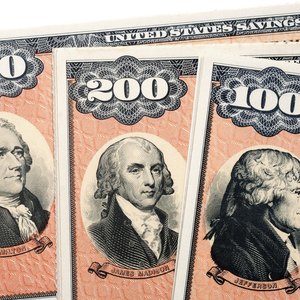
Unlike stocks, which are highly standardized, bonds come in many varieties. Callable and convertible bonds are similar in that both of them carry special provisions that make it possible for these bonds to be terminated before their official expiration date. While "callables" and "preferreds," as they are sometimes referred to in the financial media, share key features, they offer significantly different profit potential and concessions for the investor.
Understanding Callable Bonds
A callable bond can be terminated, or called, by the issuing entity before the stated maturity date. Assume, for instance, that the bond you have purchased in 2012 expires in 2020, has an original issue price, also known as face or par value, of $100 and carries a 10 percent coupon. If this bond is not callable, the issuer must pay you $10 per year, every year until 2020. If you do not receive this amount, you can sue the issuer.
If the bond is callable, however, the issuer can, at a date before 2020, declare that bondholders must return the bond to the issuer to receive a predetermined amount for each bond. Thereafter the bond will cease to exit. If it's called before expiration, the issuer pays the bondholder an amount that exceeds the par value of the bond to compensate the investor for the early termination.
Analyzing Convertible Bonds
A convertible bond has a coupon rate, face value and expiration date like any other bond. However, an additional clause in the prospectus gives the bondholder the right to exchange the bond for a specific number of shares before the expiration date. The bond's original issue price and the conversion rate are set such that the conversion would make sense only if the stock price appreciates.
A bond with a $100 face value may, for example, be exchangeable into five shares. The bondholder would make the exchange only if the stock price climbs over $20. Therefore, the market value of the stock would be below $20 at the time the bond is issued. Otherwise all bonds would be converted into shares by the bondholders as soon as they are issued, making the bond issuance a pointless endeavor.
Identifying The Similarities
Both convertible and callable bonds have an uncertain life span. In the case of callable bonds, the issuer may terminate the bonds before the stated expiration date, while the bondholder has the same right with convertible bonds. In both cases, a windfall profit is possible. The bondholder of a callable bond is compensated by the issuer for an early recall. In the case of a convertible bond, too, early termination of the bond by way of conversion only occurs if such conversion is profitable.
Highlighting The Differences
The primary difference between callable and convertible bonds is the party that has the legal right to act. With callable bonds, the issuing firm decides when to call the bonds, provided that the date window within which such action can be taken as specified in the prospectus has been reached. With convertible bonds, the bondholder decides when to convert the bonds.
While there is a windfall profit for the bondholder in either case, the profit potential with a convertible bond is much higher. The prospectus of a callable bond specifies how much the issuer must pay over the original issue price when calling the bonds. The profit potential of a convertible bond, however, is unlimited. The higher the stock price, the more the bondholder profits.
References
Writer Bio
Hunkar Ozyasar is the former high-yield bond strategist for Deutsche Bank. He has been quoted in publications including "Financial Times" and the "Wall Street Journal." His book, "When Time Management Fails," is published in 12 countries while Ozyasar’s finance articles are featured on Nikkei, Japan’s premier financial news service. He holds a Master of Business Administration from Kellogg Graduate School.

